Former Okaya City Office Building
Let’s continue my look at Okaya City’s modern industrial heritage. This time it is the former Okaya City Office.
This building is not usually open to the public, so I only saw the exterior.
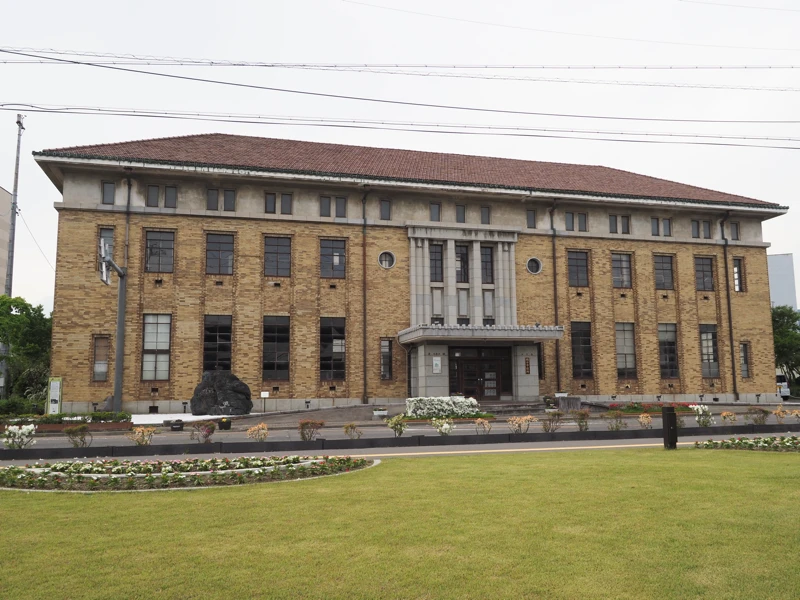
I took this photo from the Sanshi Park (means :Silk Yarn Park) on the opposite side of the building.
The government building was built in 1936.
The city of Okaya (Hirano Village at that time) prospered in the silk industry during the Meiji and Taisho periods, but the Great Depression of 1929 caused the market price of raw silk to plummet the following year, leading to a string of bankruptcies at silk mills and a large number of unemployed people. Farmers were so deep in debt that they could not pay their taxes. Village finances also suffered.
In Hirano Village, there had been discussions since the Taisho era (around 1920) that it would be financially and administratively advantageous to shift to a municipal system. The recession heightened the sense of urgency, and talk of adopting city status began to take shape in 1933, with the goal of becoming a diversified industrial city rather than a solely silk manufacturing industry.
One of the conditions for the establishment of a city was the construction of a government office building, so the village mayor at the time, Goro Imai, asked the silk manufacturer, Fukutaro Ozawa (1860-1937), to donate one. Ozawa readily agreed to the request (it is said that he reached a decision in one night) and donated the city office.
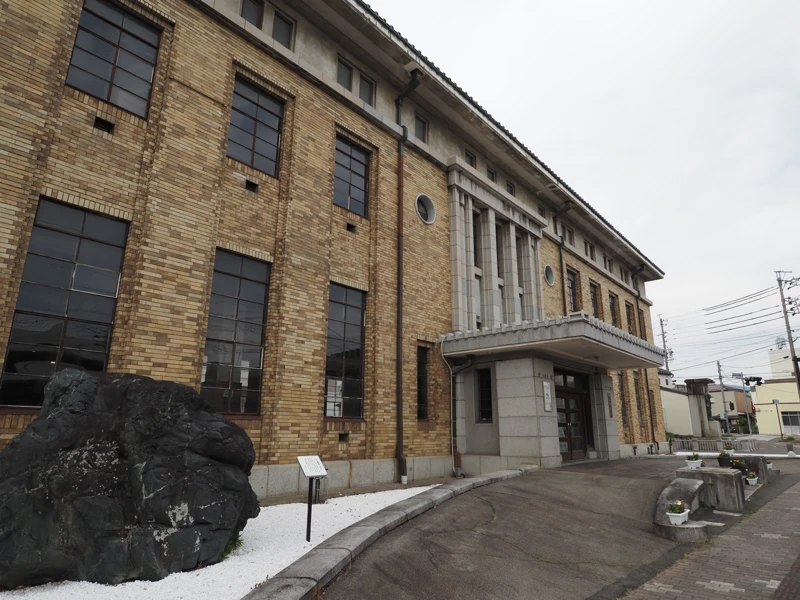
The building was designed by the Nagano Prefecture’s Maintenance Section (from March 1935), construction began in June, and the building was donated to the village in March 1936.
In response, the village decided to erect a statue in honor of Fukutaro Ozawa.
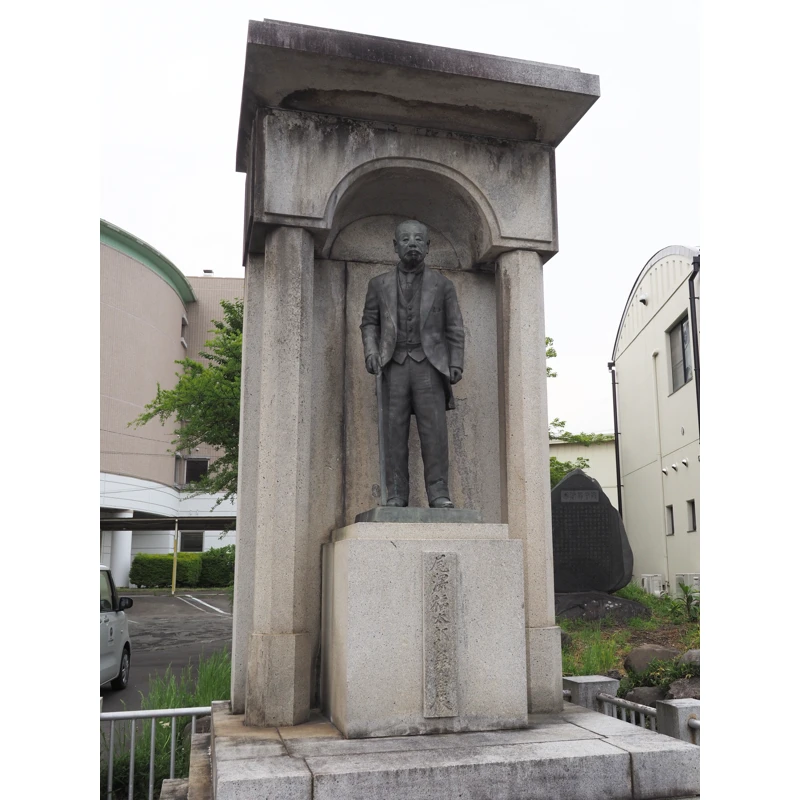
On March 31, the village moved to a new building and held its last Hirano village assembly. The next day, Okaya City was inaugurated.
The building was used as the city office until 1987 and then as a fire station until 2015. In 2005, it was registered as a Tangible Cultural Property, and in 2007, it was recognized as a Heritage of Industrial Modernization.
The photo was taken from the “Okaya City handbook” published in 1936. Neither the appearance of the building nor the location of the statue seems to have changed.
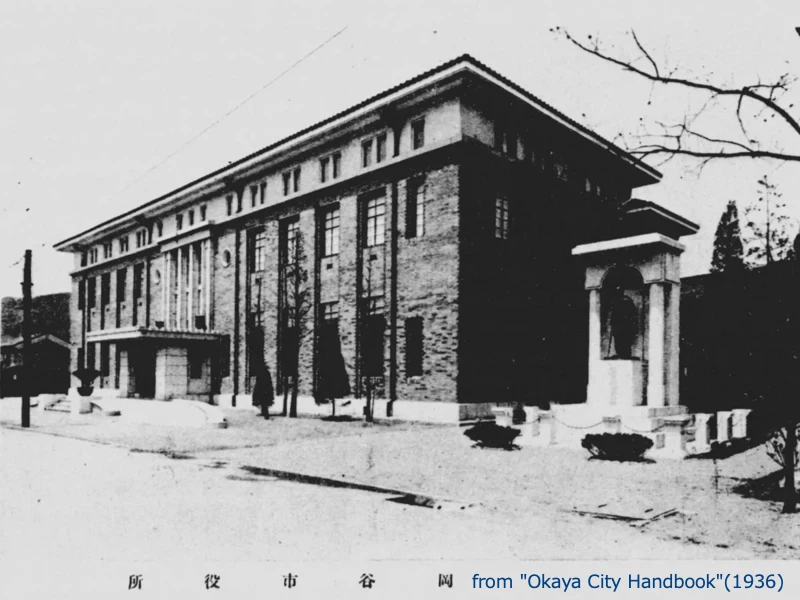
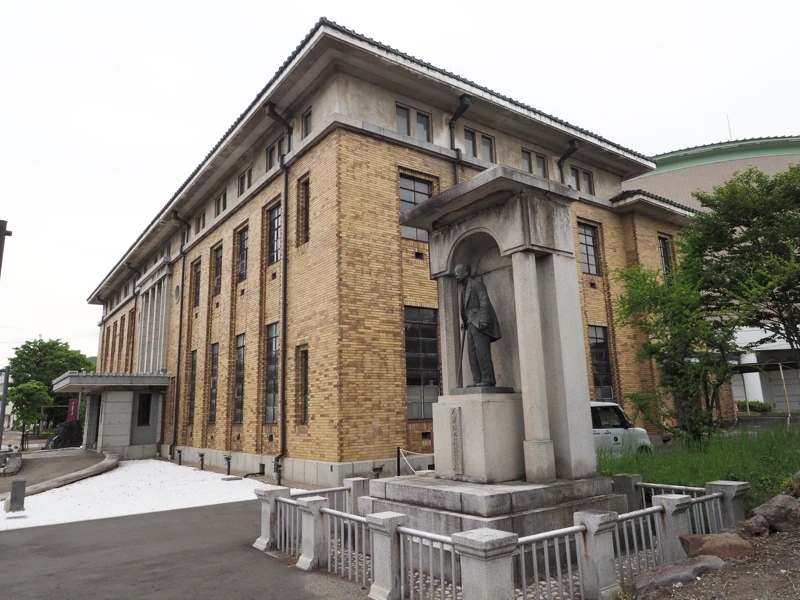
Let’s walk around the building.
The front of the building faces almost to the south (south-southeast is more accurate), I went around to the east.
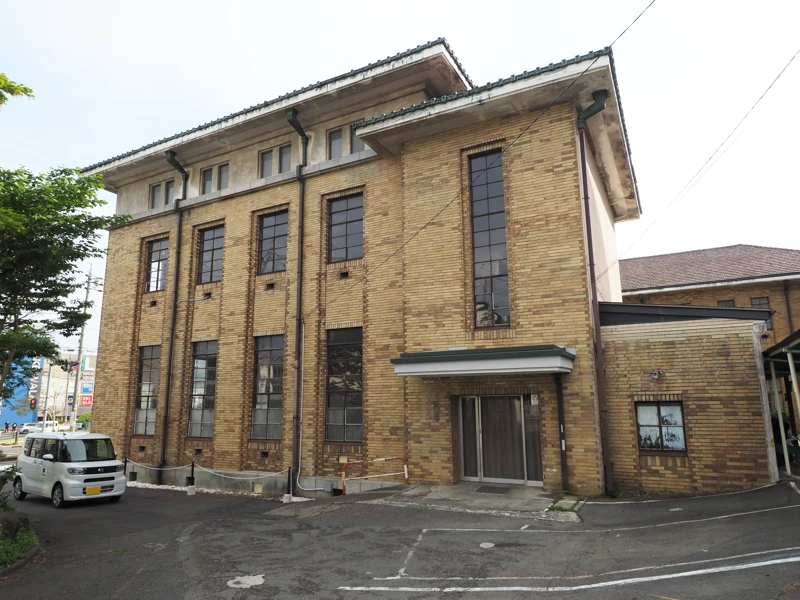
Rear of the building (north side).
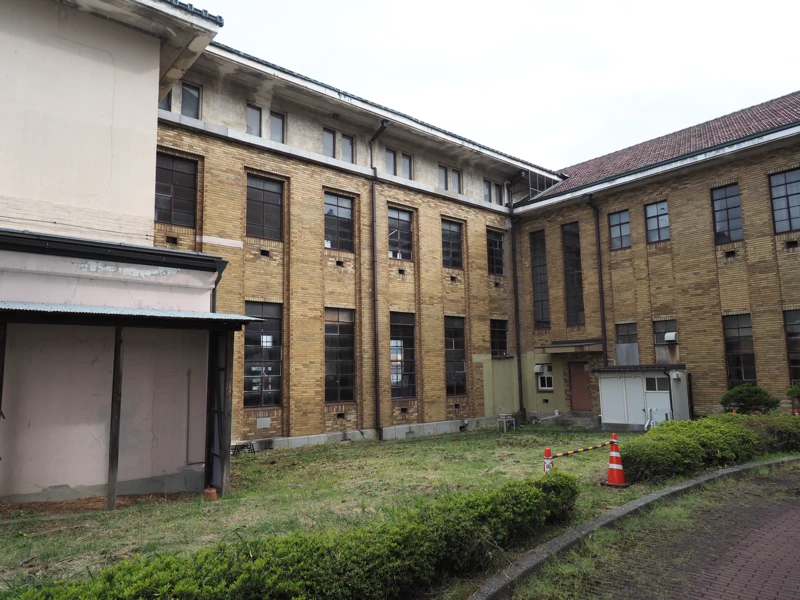
On the west side of the government building, the building extends to the rear.
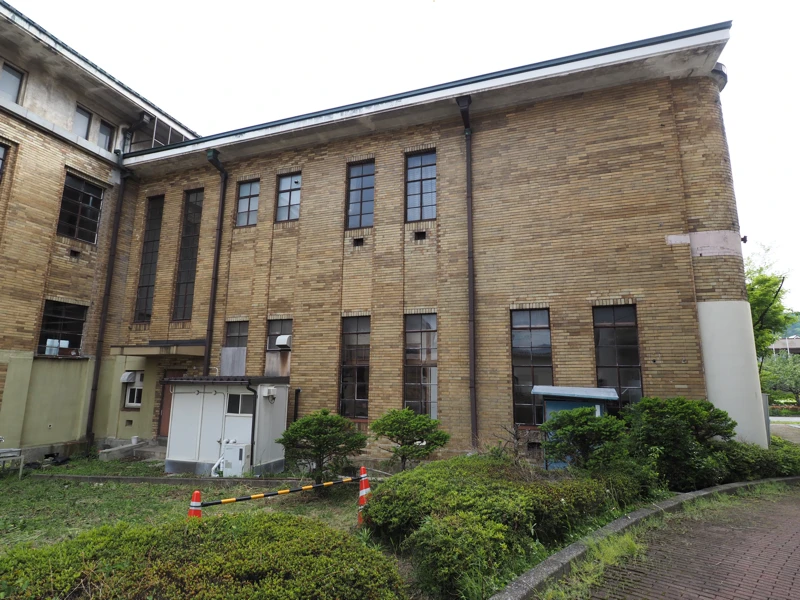
From the street on the west side.
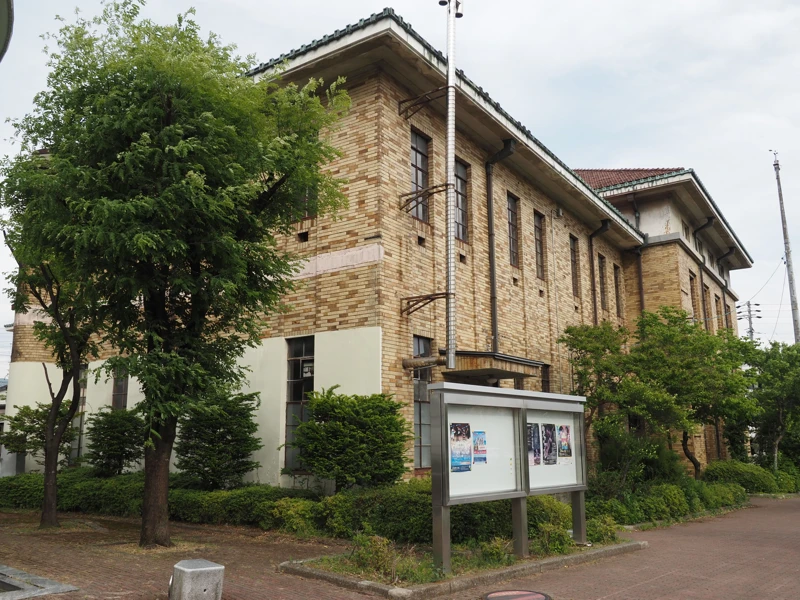
One of the entrances on the west side. (There is also another small door.)
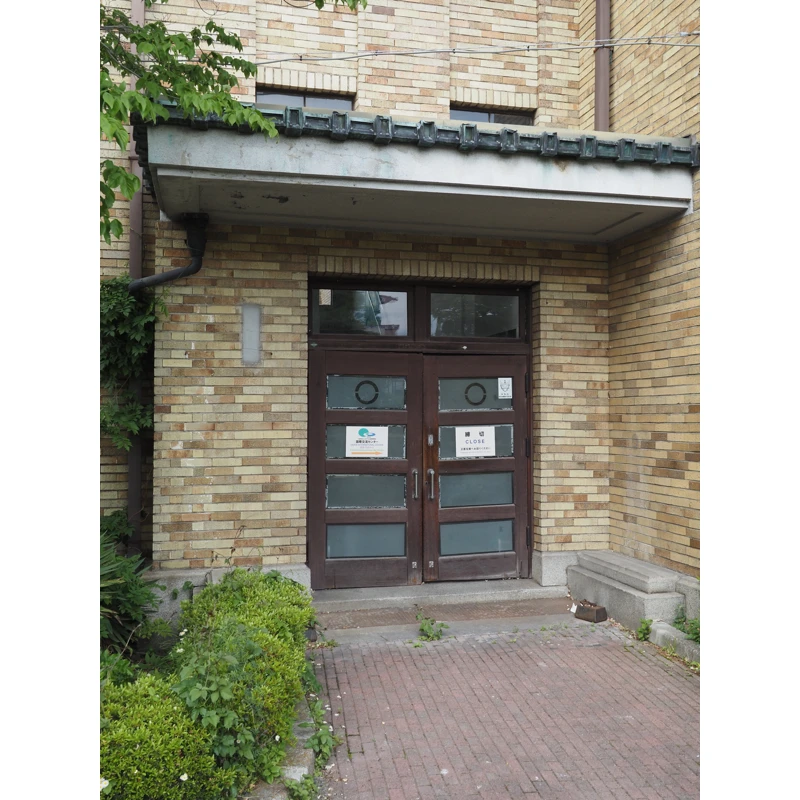
Two stones in front.
The stone in front is a signpost for the tour of the Industrial Heritage of Modernization. “Aruki-taro" is a character from Takeo Takei"s work.
The stone in the back is a stone called Sanbaseki, which was dug out in Tomioka City, Gunma Prefecture. It was a gift from Tomioka City to commemorate the 5th anniversary of the sister city relationship between Okaya and Tomioka.
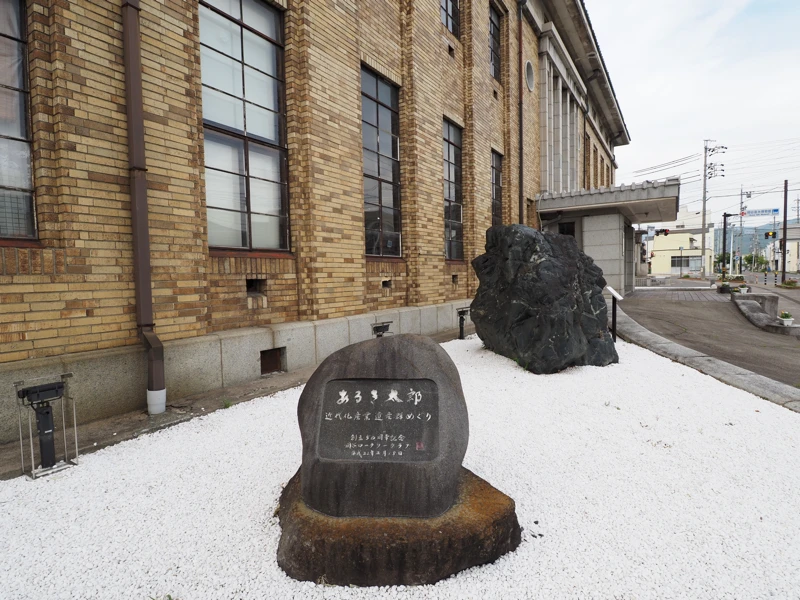
The main entrance. A signboard on the inside of the entrance says it is not open to the public.
The building was used for filming a movie a few years ago, and when a tour was held in 2023, more than 700 people applied for the tour in three days.
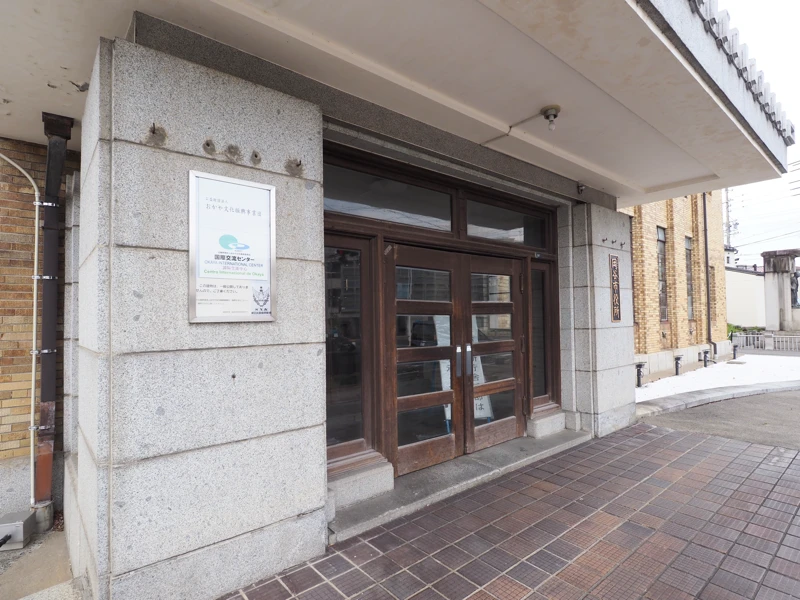
The building underwent a deterioration survey in 2022, and seismic reinforcement work was conducted in 2024. Four earthquake-resistant walls were installed, and the linoleum floor was removed and restored to wooden flooring. After the fire station was relocated, the office of the Okaya Cultural Promotion Organization is currently located in a corner of the first floor.
The city is considering the future use of the building, and is planning tours and workshops to experience the maintenance of the building.
They are also planning to create digital content that will allow visitors to tour the building on the web. (The city is aiming to open the building to the public in 2026.)
[Reference] (all written in Japanese)
“Okaya City History, Vol. 2" (Okaya City/1976)
“Okaya City Hall, a virtual tour, will be open to the public next year" (Nagano Nippo, 2025-05-22) (Only the beginning can be viewed.)

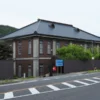
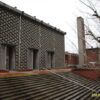

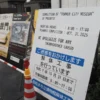
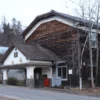
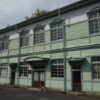
Discussion
New Comments
No comments yet. Be the first one!